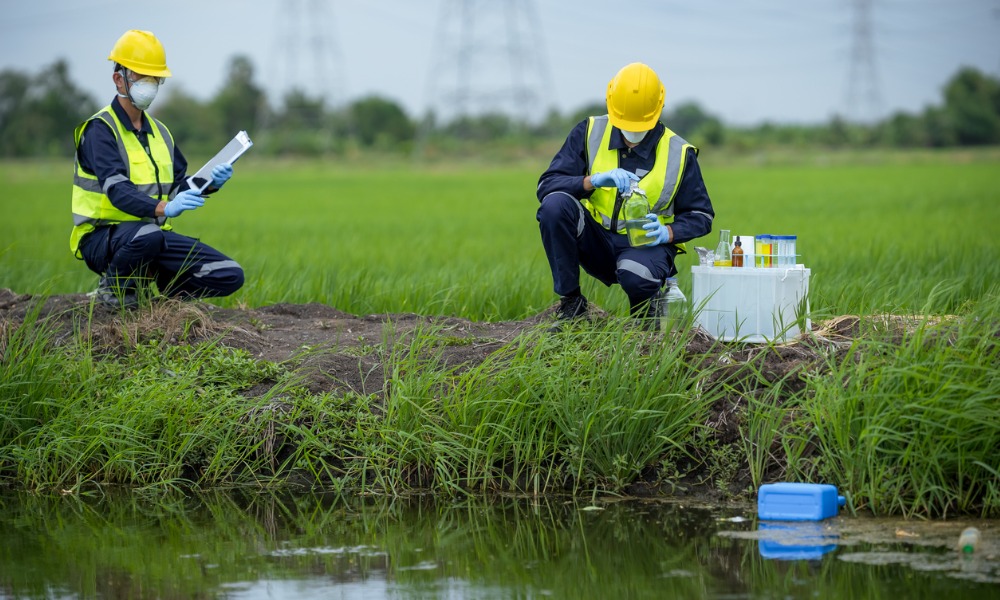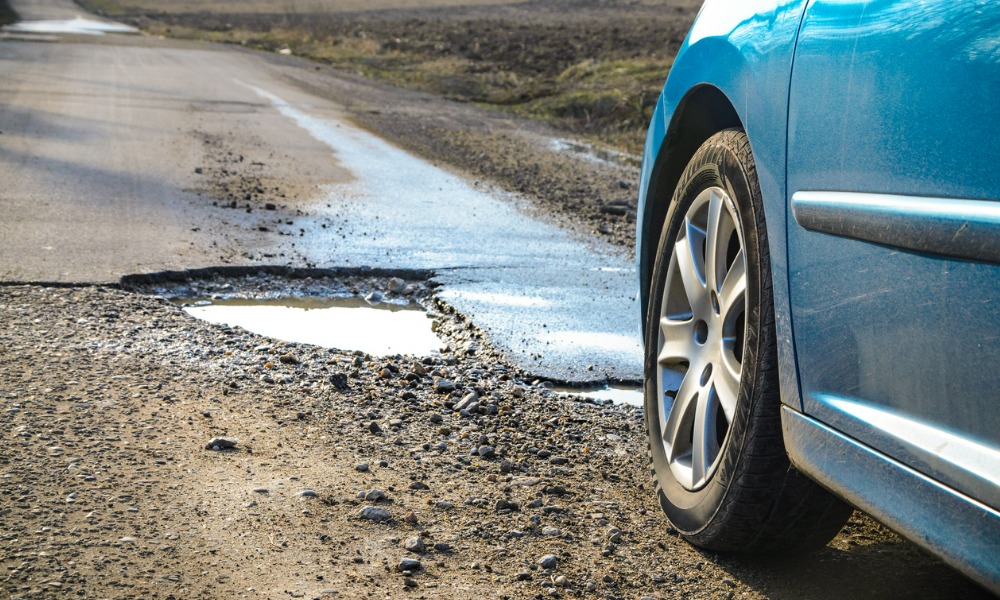Check out what lawyers has to say about how to discover and manage environmental contamination when buying a real property in Canada

Updated: 24 April 2024
In TV, the work of environmental lawyer Marshall Eriksen in the TV show How I Met Your Mother may seem easy at times.
But when it comes to purchasing land in Canada, environmental contamination is one of least known – but one of the most important – aspects that lawyers can help clients with.
In this article, we’ll be discussing some key points straight from environmental lawyers about the obligations and liabilities of sellers and buyers in a sale of real property. This article can be used by lawyers to help their clients understand the importance of addressing environmental contamination before buying land in Canada.
What is environmental contamination in a sale transaction?
In real estate, environmental contamination happens because of the previous owner’s use of the property, or because of the nature of the business that used the property. These contaminants may also be released to the environment because of the property owner’s negligence or improper handling of chemicals.
Environmental contamination can happen in different types of properties according to their use of the land. Examples of these are:
- agricultural: when there’s long-term chemical use for the planting, propagating, and harvesting of crops
- residential: when the property was previously used for commercial purposes, then converted into a residential area
- commercial: when previous landowners’ business is to produce and/or handle chemicals, such as factories and mining operations
When contaminated land is sold to another, who is then liable for this contamination? Is it the seller or the buyer?
“We’ve got a lot of these sites . . . and the issue is always cost; who should pay and how that should be dealt with in terms of the buyer, the seller.” This is what Calgary lawyer Rob Omura says, referring to unregistered and unregulated dump sites and old drilling wells.
“The difficulty always is, when it comes to historical use of the land, sometimes that’s not obvious. Prior to 50 somewhat odd years ago, they just did not appear on maps.”
More on what is a contaminated land in this video:
Additional resources on the rights of buyers in a sale are found on our Real Estate practice area page.
Additional costs for the buyer
Environmental contamination has become an increasing concern in real estate and the resulting liabilities could far exceed the original cost of the property.
Often, it’s simply not considered at the time of the purchase because it may not seem obvious when just looking at the property. Once environmental contamination is discovered, it becomes a burden for new owners. In some provinces, the new owner could be left paying the entire bill for the cleanup.
However, in other provinces, such as British Columbia and Ontario, previous property owners can also be held liable – either solely or jointly with the new owners.
Different liabilities for different properties
In deciding the liability of each party in a sale of contaminated land, the law applies differently depending on the property that was sold.
For residential properties, the primary rule has been caveat emptor or “let the buyer beware.” This rule states that the buyer has the obligation to inquire about and investigate the previous uses of the land and be aware of its condition before closing the sale. Part of this rule states that the seller is also responsible for disclosing known issues to the buyer, such as latent defects.
Commercial properties could be more complicated. In Alberta, for instance, old drilling wells predating 1950 were never mapped out. Omura says there isn’t a clear record of wells drilled prior to 1970. This makes it difficult for buyers to investigate these possible problems when purchasing the property.
What are the laws in Canada about environmental contamination?
Canadian laws about environmental contamination are composed of federal and provincial statutes on the matter. Regulations on environmental site assessments (ESAs) can help buyers of real properties determine whether they’re contaminated or not.
Common law also provides some guidance for both buyers and sellers when settling who would be responsible in cases of environmental contamination.
New Brunswick
In New Brunswick, if environmental contamination is discovered on a property, the current owner will be liable for the cleanup regardless of who caused it, says James Mosher, an Office Lead Partner at McInnes Cooper in Saint John. His practice focuses on corporate commercial law including real property.
“Clearly, you can go after the cause of the contamination, but the owner of the property will be responsible as well. If you purchase a property and it’s contaminated, guess what, you just purchased a liability. So, it’s a major concern.”
British Columbia
Vancouver lawyer Selina Lee-Andersen, a Partner at Miller Thomson LLP, says that the buyer can be, to some extent, in the hands of the seller.
In Ban v. Keleher, a 2017 Supreme Court of British Columbia decision, the seller of a residential property was found negligent for not indicating certain facts on his property disclosure statement.
Here, the seller did not disclose that he was aware of contamination from a nearby dry-cleaning business migrating onto neighbouring properties. The disclosure statement also failed to state that he had been given notice by an environmental consultant that there was likely some migration of contaminants on his property.
Although the plaintiffs did not retain a lawyer to carry out the conveyance of the property, searches of the property would not have revealed any direct concerns.
Lee-Andersen says the case raises the question: To what extent does caveat emptor apply?
She adds that the Ban case shows that potential liability could extend to advisors, including real estate agents, home inspectors, and environmental consultants. But she points out that B.C. property owners have some protection under contamination site regulations.
If due diligence reveals no concerns but contamination is later discovered, the owner is exempt from being liable for that contamination if subsequent remediation is needed.
Property owners in the province can also seek minor contributor status and pay a smaller portion when costs are allocated.
Ontario
Lawyers can also be held liable for their negligence, as shown by one Ontario Superior Court of Justice case.
In Dobara Properties Limited et al. v. Arnone et al, a real estate lawyer was also found responsible after an environmental contamination was discovered.
Here, a Hanover law firm was fined for having missed the limitation period for its clients. They were suing their original lawyer who had acted for both the seller and the purchaser. An expired lease discovered after the purchase showed it had once been occupied by a gas station that had underground storage tanks on the property.
Aaron Atcheson, Partner at Miller Thomson LLP, says this case raises concerns about the responsibility of the lawyer to review the land title for any environmental risks dealing with deleted instruments.
“If there was something that looked like a contaminating activity – in this case it was a Shell gas station – then you should flag this with your purchaser for them to consider whether or not they want to get more environmental [assessments] done.”
How can lawyers help with environmental contamination issues?
With all these problems presented, buyers are not without legal remedies. Lawyers have many tools to help them lessen these unforeseen environmental issues.
Below are some of these tools, including some tips from lawyers, when addressing environmental contamination in the sale of real property:
Renegotiate the purchase price
With the help of a lawyer, buyers may renegotiate the purchase price if the level of contamination is tolerable for the end user.
The discovery of contamination reduces the property’s value and the buyer’s right to terminate gives them some leverage to renegotiate the price. For example, land on which oil or gas was spilled might be adequate if it is on city services and the ground water is not needed for drinking.
Due diligence when buying a property
Part of the doctrine of caveat emptor is that buyers must always conduct due diligence before finalizing a sale. This equally applies to real properties.
The possibility of contamination, including historical problems, needs to be considered in every purchase, says Mosher. As such, environmental or real estate lawyers can help buyers take steps when investigating the land that they’re about to purchase.
But it’s a struggle for lawyers who sometimes are not called into the deal until after the purchase and sale agreement is signed. Mosher describes it as a lost opportunity. At that point it’s too late to extract from the vendor that there are no issues around environmental contamination, or the disclosure of any studies that have been done in the past.
“If you look at the history of contamination with either commercial or residential property, a lot of headaches would have been saved if they had done due diligence early on in the process where they could have worked on these issues up front,” Lee-Andersen adds.
These approaches may include:
- to examine how the property has been used historically
- to determine if the property has been flagged in the past by exploring the files and contamination registries of provincial environment departments
The length that a business has occupied that property can also play a role, given the evolving societal behaviour and legislation. For instance, double-walled fuel tanks are now required. But contamination might remain unaddressed where single-walled tanks once existed, if the same owner has occupied the property for a long period.
Environmental assessments
Lawyers can help manage the risks for new property owners when they’re buying contaminated land. Part of this is to help them know if the land is even contaminated in the first place or not.
Phase 1 environmental assessments are the regular go-to option for buyers who want to ensure they know what they’re buying.
Part of these assessments are:
- to ask the buyer about any known issues or historical uses
- to search for any assessments that may have been conducted in the area
These can also tell if further investigation is necessary on the part of the buyer.
Right to investigate before the closing date
Still part of the buyer’s responsibility of conducting due diligence is their right to investigate environmental contamination before the sale’s closing date. The key is building allowances in the offer to purchase, so that the buyer has more time to determine if the property is indeed a good fit.
Mitigating land contamination issues begins prior to the closing of a real estate purchase, says Donna Shier, a Partner at Willms & Shier Environmental Lawyers LLP.
She has also written extensively on environmental contamination dating back to The Toxic Real Estate Manual in 1989, which she co-authored with her former partner, John Willms.
Shier says that “a lot of the problem deals where that’s not in the condition and somebody ends up in a lawsuit.”
“The reason why I like to see the right to investigate is because many clients are quite sophisticated, and they can, with the proper information, determine [if] the target property is within their risk tolerance.”
The right to investigate should also include enough time for:
- a Phase 1 assessment to check the historical use of the property, as well as the neighbouring properties
- a physical investigation, which may involve soil and water testing if necessary
Shier also likes to include the right to terminate if the investigation of the property's condition reveals contamination.
Risks (and perks) of buying contaminated land
Lawyers can lay out the risks of buying contaminated land for their clients. However, this is subject to a candid conversation between the client and the lawyer.
As earlier mentioned, the right to terminate also allows for a strategic purchase, since not everyone requires pristine land, Shier points out. If the property is somehow contaminated, the purchaser might still be interested because they deem it adequate for their use.
“If I have a dirty business, why should I spend for a property that’s totally clean? I might be quite happy with a nicely dirty property, for which I pay a lot less. The question is how dirty is nicely dirty and how dirty is just too dirty for my taste,” says Shier. “Different purchasers have different plans and partly what they intend to do” with the land, and “that’s one of the elements that affect their risk tolerance.”
That is why lawyers must understand their client, according to Shier. “You have to get your client to understand why you have to understand what your client’s objectives are.”
Things that lawyers must know
Since there are many factors that affect a prospective purchaser’s assessment of risk, Shier points out the things she likes to know from clients:
- if they require financing, and if financial institutions will be involved, what any redevelopment plans include
- if they will have to file a record of site condition, because they are going to change from industrial or commercial to residential use
- if they intend to keep it for commercial uses when buying a commercial property
“It is my job to ask those questions and make sure the client understands the importance of the environmental information in the context of the client deciding that the environmental risk is acceptable,” she says.
Environmental contamination: a concern for buyers and sellers
Going back to the question of who is liable for environmental contamination, it appears that the answer would be: it depends.
First, provincial laws may differ on how they assign liability the buyer, the seller, or both.
Second, the acts of the parties to the sale – from the negotiations to the closing date, and maybe even until several years after – are also a factor.
Nonetheless, it’s still important that buyers always refer to lawyers, whether they be in the field of real estate or environmental laws, to prevent any further costs. Just keep Marshall Eriksen in mind.
Check out this list of the best environmental lawyers in Canada as ranked by Lexpert. They can advise you on what to do in cases of environmental contamination in a purchase agreement.










